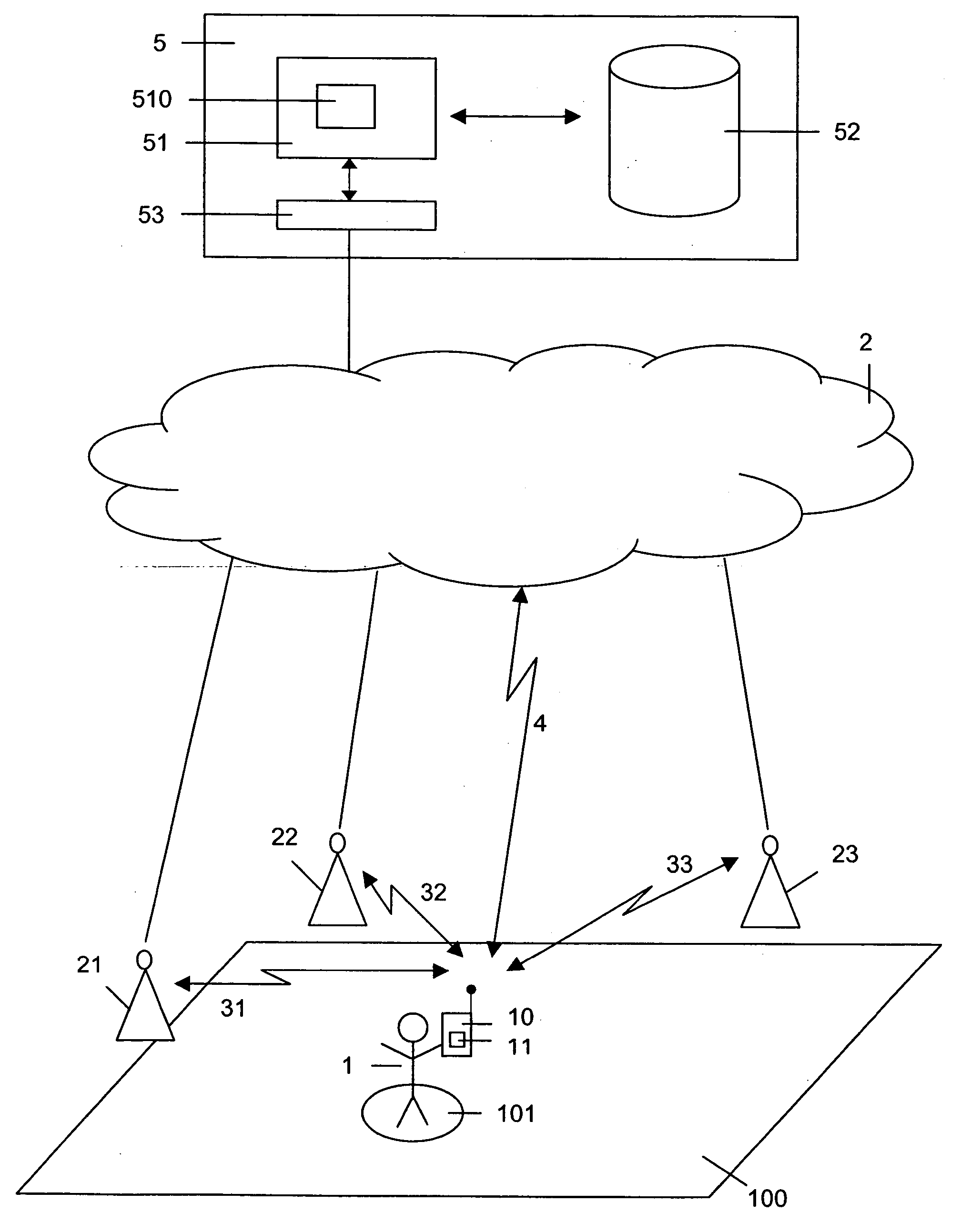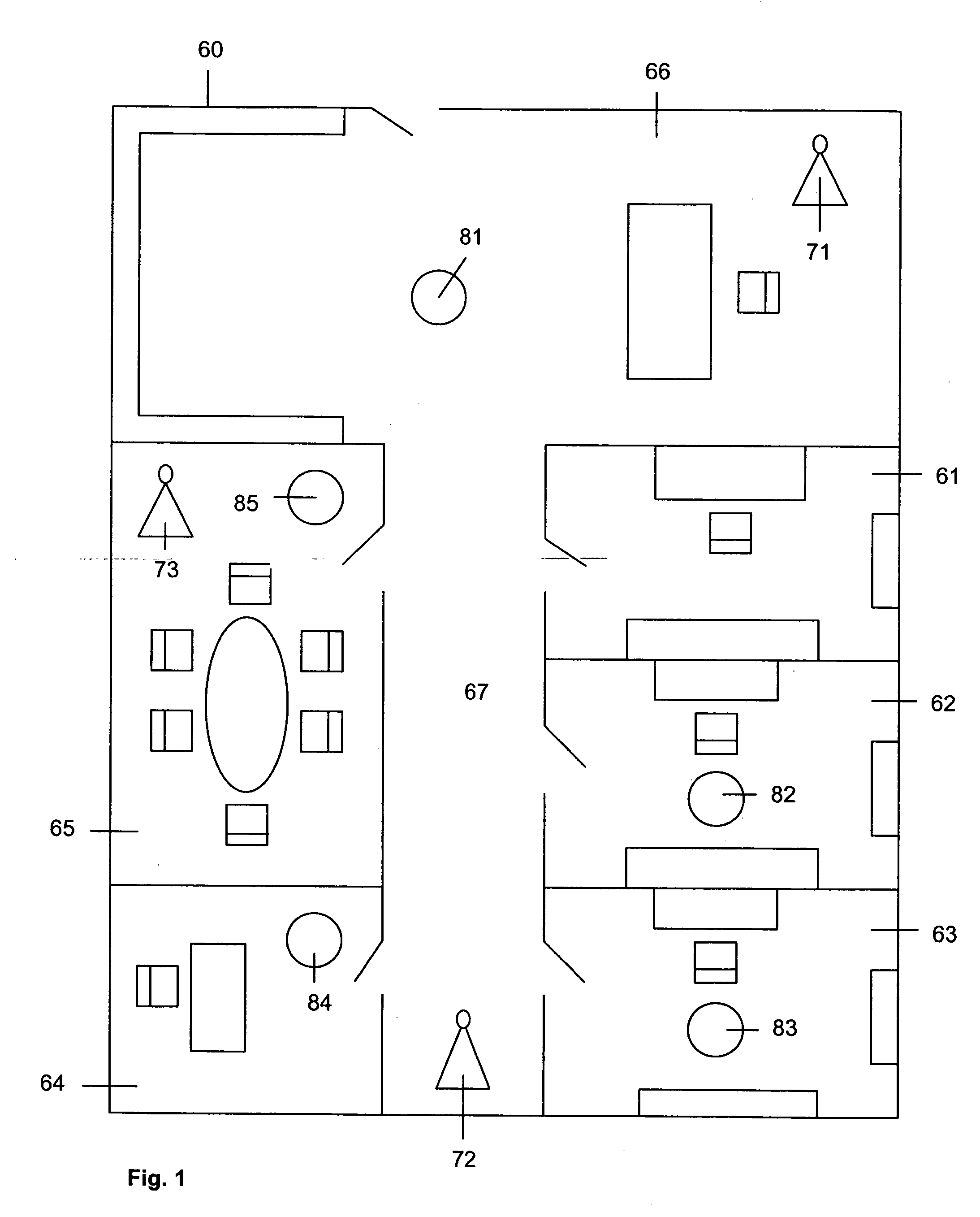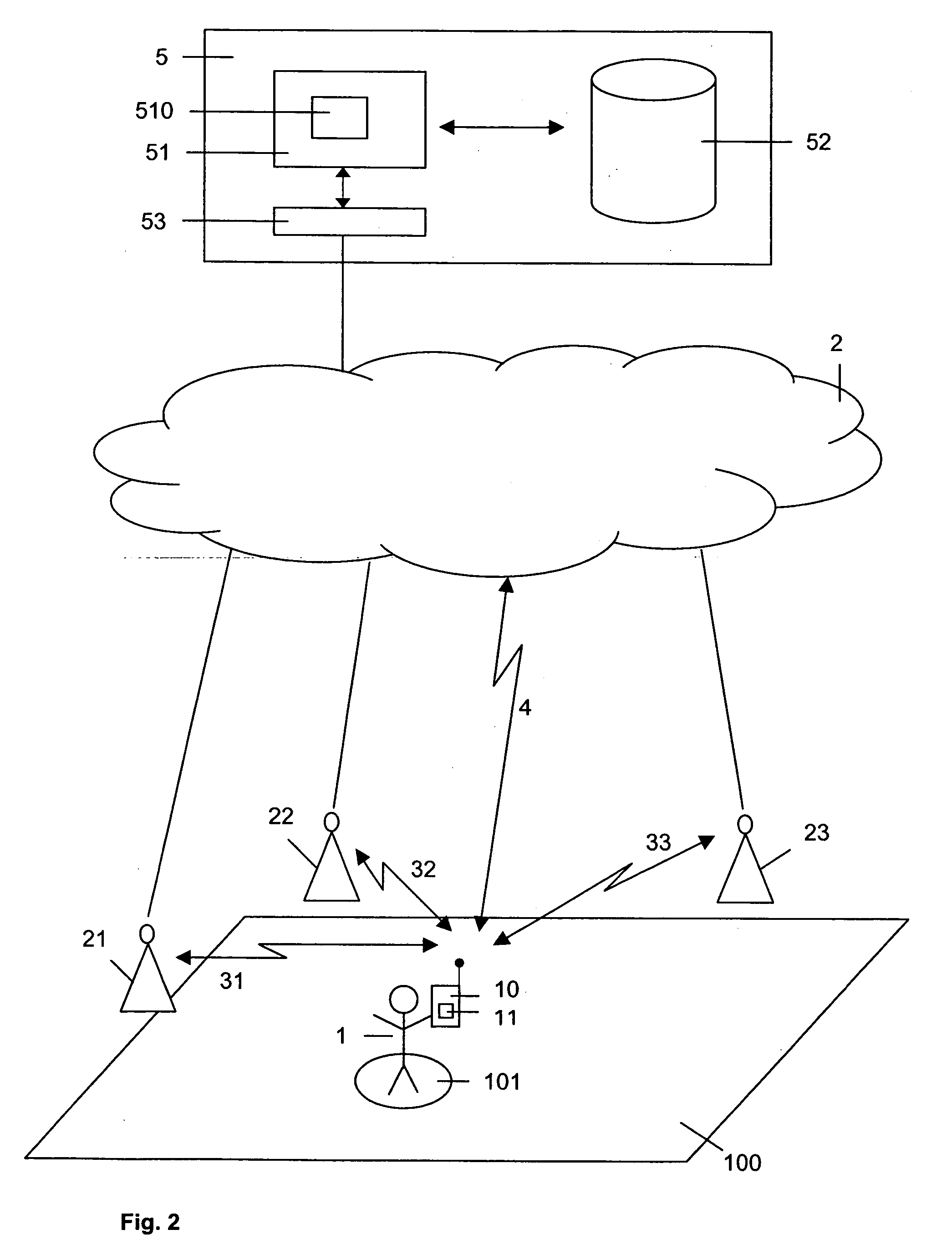Geographical localisation service
- Summary
- Abstract
- Description
- Claims
- Application Information
AI Technical Summary
Benefits of technology
Problems solved by technology
Method used
Image
Examples
Embodiment Construction
[0023]FIG. 1 is a schematic floor plan diagram where a geographical localisation service is provided. The floor 60 consists of four office rooms 61, 62, 63, 64, a meeting room 65, a reception area 66 and a corridor 67 leading from the reception area 66 to the office rooms 61, 62, 63, 64 and the meeting room 65. The offices 61, 62, 63, 64, the meeting room 65 and the reception area 66 comprise usual office furniture like chairs, desks and racks. A WLAN is installed on the floor 60, comprising three WLAN access points 71, 72, 73 which can be accessed from mobile terminals.
[0024] When a user of a WLAN-enabled mobile terminal is located in proximity to the WLAN access points 71, 72, 73, the terminal receives presence signals from the WLAN access point 71, 72, 73, the signals comprising an SSID which identifies the network the WLAN is associated to. The WLAN access points 71, 72, 73 can be identified based on the use of the SSID. Then the user can choose which WLAN access point he wants...
PUM
 Login to View More
Login to View More Abstract
Description
Claims
Application Information
 Login to View More
Login to View More - R&D
- Intellectual Property
- Life Sciences
- Materials
- Tech Scout
- Unparalleled Data Quality
- Higher Quality Content
- 60% Fewer Hallucinations
Browse by: Latest US Patents, China's latest patents, Technical Efficacy Thesaurus, Application Domain, Technology Topic, Popular Technical Reports.
© 2025 PatSnap. All rights reserved.Legal|Privacy policy|Modern Slavery Act Transparency Statement|Sitemap|About US| Contact US: help@patsnap.com



